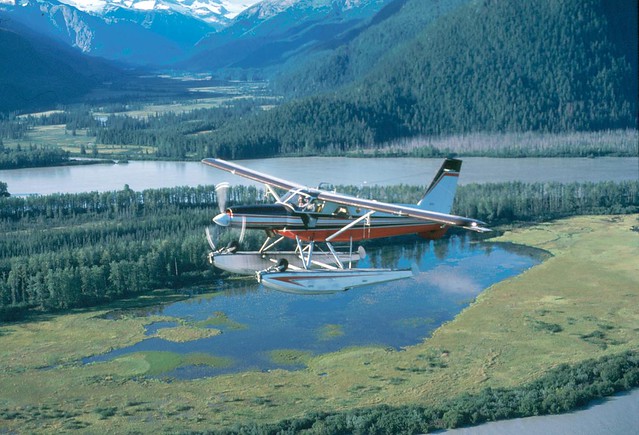Honoring an Alaska Aviation Legend
The following is courtesy of the U.S. Fish and Widlife Service’s Alaska Region:
Headed to Alaska? You can soon catch a glimpse of U.S. Fish and Wildlife Service history at the Ted Stevens Anchorage International Airport.
The above plane (N754), a testament to human ingenuity, is being installed at the airport and should be ready for its close-up in mid-November.
N754 started out as an ordinary deHavilland Beaver built in 1952, and it flew military missions in Cuba. Its transformation into something extraordinary began when the Service acquired it as surplus in 1964.
PHOTO GALLERY: A One-of-a-Kind ‘Bird’
Logging 15,000 hours of waterfowl surveys and excellent safety record!! The deHavilland Beaver N754 on display @TSAIAirport #N754 #TravelTuesday @USFWSBirds https://t.co/WLfRPd0TJC pic.twitter.com/1nPHg5c0t3
— USFWS Alaska (@USFWSAlaska) February 27, 2018
We planned to use it for aerial waterfowl surveys in Alaska, a dangerous job because survey flights are usually at low altitude, so our pilots and mechanics made some serious modifications to improve safety and visibility. Check them all out! Because we knew what was needed and modified it to do one specific job – waterfowl surveys – N754 was a one-of-a-kind aircraft with an excellent safety record.
And fly surveys it did. Our pilots flew N754 for survey work in Alaska, Canada, Mexico and Russia, with N754 logging nearly 15,000 hours of waterfowl surveys by the time it retired in 2011
In 1972, while flying N754, FWS pilot-biologist Jim King evaluated waterfowl breeding areas across Alaska. This effort later helped set the boundaries for Tetlin, Yukon Flats, Nowitna, Koyukuk, Selawik and Innoko National Wildlife Refuges.
 Rod Drewien with a swan. Photo by USFWS
Rod Drewien with a swan. Photo by USFWS
There is a photo of N754 on flickr and the user calls it an “ugly duckling.” It was also called “Pinocchio.” Form definitely took a back seat with N754, but when it was flying, it was considered a safer and more reliable waterfowl observation platform than any other aircraft in the fleet. So unlike Hans Christian Andersen’s ugly duckling, N754 never turned into a beautiful swan. Instead, it did what it was built for, surveying waterfowl, including swans.
- Turbine powered Garrett TPE-331-2 engine to climb fast to allow for waterfowl survey missions surrounded by high terrain
- Front doors eliminated to strengthen engine mounts and accommodate large side windows with narrow transition posts for enhanced wildlife viewing (pilot could actually see the tips of both floats)
- Downward exhaust to eliminate blurred visibility for waterfowl survey counts
- Direct drive, reversible propeller for improved maneuverability on the water
- Custom long-range wing fuel tanks for survey missions in remote bush locations
- Relatively high cruise speeds for efficient transiting between survey locations
- Relatively low stall speed for safe operation during survey counts
- Airframe strengthened for high gross weight operation
- Widened amphibious floats for increased flotation and improved performance during water operations
- Rugged amphibious landing gear with good soft field capabilities to land and take off from almost anywhere
- Upgraded avionics including multiple Global Positioning Systems to pinpoint locations of waterfowl observations
- Panel mounted data collection computers specifically designed for waterfowl surveys
- Organized flight controls and instrumentation to reduce burden on pilots during low-level surveys
- Independent power supplies for laptop computers and other portable accessories
- 5-point shoulder harness restraints at all four seat positions for increased aircrew safety
- Photographic port for large format camera
- Intercom-equipped at all four seats for effective communication among members of aerial survey crew




